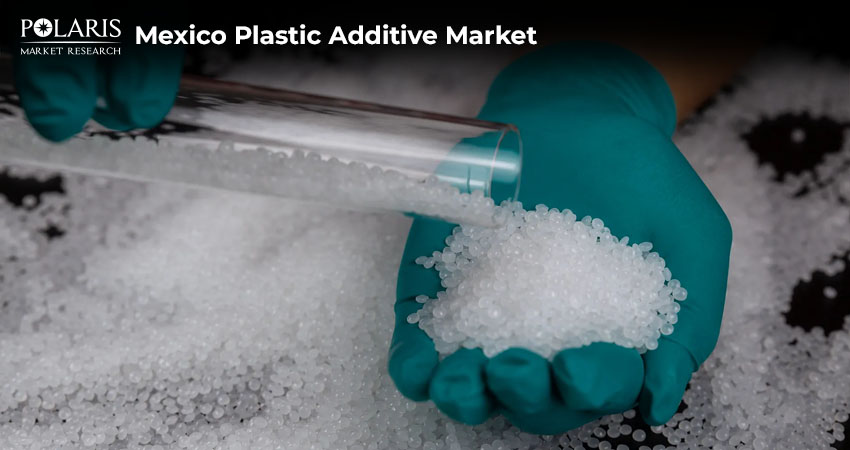Inside the Evolving Plastic Additives Ecosystem in Mexico

Plastics influence every activity and object in more lives. In fact, several tasks depend entirely on plastic products. From manufacturing and automotive to healthcare and pharmaceuticals, the role of plastics is indispensable. In Mexico, where manufacturing is a cornerstone of the national economy, plastic additives are quietly shaping industries.
While plastic additives may not be the most visible parts of plastic products, they are integral to how plastics perform across applications. With Mexico deepening its role in global supply chains, the importance of plastic additives continues to grow. Continue reading as we delve into the fundamentals of plastic additives, covering their basics and various types. Also, we shed light on the Mexico plastic additive market landscape and the factors shaping its growth.
What Are Plastic Additives?
Plastic additives are compounds added during the polymer manufacturing process. These additives are incorporated to enhance processing performance or improve the properties of the resin. The main function of plastic additives is to improve polymer processability. They are also used to optimize processing conditions, enhance processing efficiency, and improve product performance. These additives can be in pellet, liquid, or powder form. Interestingly, some plastic additives can exist in all three forms simultaneously.
What Are Key Market Stats?
Our latest market analysis reveals that the Mexico plastic additives market is set to witness sustained growth in the coming years. The market was valued at USD 1,352.12 million in 2024 and is projected to grow to USD 2,054.65 million by 2034. It is projected to register a CAGR of 4.3% from 2025 to 2034.
The rising urbanization in Mexico is driving the demand for construction materials. Many of these materials, such as cables, pipes, and insulation, are made from plastics. Plastic additives help improve these materials by improving their strength, flexibility, and weather resistance. Additionally, the rising demand from major Mexican industries, such as packaging and automotive, further contributes to market growth.
What Are Common Plastic Additive Types?
Here’s a look at some of the commonly used types of plastic additives:
Plasticizers
Plasticizers are additives incorporated into plastics to enhance their flexibility, softness, and processability. Intermolecular forces hold polymers together. Plasticizers interfere with these forces, which allows the polymer chains to move more freely. They also increase the "free volume" within the polymer structure. This provides more space for the polymer chains to move past each other. Essentially, plasticizers act as a lubricant between polymer molecules, enhancing their mobility and reducing the material’s stiffness.
Flame Retardants
Flame retardants are chemical additives incorporated into plastics to hinder, delay, or prevent the combustion of plastics. They also help reduce smoke and prevent melt-dripping during a fire. Flame retardants work through various mechanisms, including gas-phase inhibition, condensed-phase reactions, and endothermic reactions. Flame retardants based on gas-phase inhibition release non-flammable gases that dilute the oxygen and fuel concentrations, slowing down combustion. Other retardants promote the formation of a protective char layer on the plastic’s surface, which acts as a barrier against heat and oxygen.
Antioxidants
Antioxidants are plastic additives that prevent or delay the degradation of plastics due to oxidation. These additives work by neutralizing free radicals, which are unstable molecules that trigger oxidation chain reactions in plastics. By interrupting these reactions, antioxidants help prevent the polymer from breaking down. Antioxidants are crucial for maintaining the quality, performance, and lifespan of plastic products. This is especially true for demanding environments.
Antimicrobials
Antimicrobials are incorporated into plastics to inhibit the growth of microorganisms like bacteria, fungi, and mold. These additives help create more hygienic products by reducing microbial colonization on surfaces. Antimicrobials that contain metal ions release these ions, which disrupt cell membranes and interfere with cellular processes. Some organic antimicrobials disrupt cell membranes, whereas others may interfere with enzyme activity or DNA replication within the microorganisms.
Innovation and the Move Toward Greener Additives
The environmental impacts of plastics are coming under increasing scrutiny. As such, there is a growing push within the Mexican manufacturing ecosystem to shift towards eco-friendlier and more innovative plastic additives. Here’s how innovation is aligning with the shift towards greener additives:
Bio-Based Additives
Bio-based additives are developed using renewable raw materials such as corn starch, soy protein, castor oil, lignin, or even algae. These naturally derived inputs aim to replace conventional petroleum-based chemicals and reduce the overall carbon footprint of plastic production. Mexico’s major agricultural industry presents an untapped opportunity to create a circular value chain. For instance, bio-based polymers are now being tested in packaging materials to provide flexibility without compromising compostability.
Non-Toxic Flame Retardants
Traditionally, halogenated flame retardants have been the go-to choice in fireproofing plastics. However, they’ve raised serious concerns over toxic emissions and long-term environmental persistence. In response, manufacturers are adopting halogen-free and low-smoke formulations based on phosphorus compounds, nitrogen-based retardants, and intumescent systems.
Smart Additives
Smart additives, also known as functional additives, are revolutionizing how plastics behave under real-world conditions. These additives allow plastics to interact dynamically with their environment. For instance, UV-responsive additives can change color upon exposure to sunlight, indicating spoilage or excessive light exposure. Similarly, thermochromic and photochromic pigments change color in response to temperature and light conditions, and are often used in branding or interactive packaging. The introduction of these additives is opening new applications across various sectors in Mexico.
Final Thoughts
Plastic additives play a crucial role in shaping the performance, safety, and sustainability of products across Mexican industries. As technology advances and the focus on sustainability increases, the Mexico plastic additives market is shifting its focus from purely functional aids to vital components in a more responsible manufacturing ecosystem.

